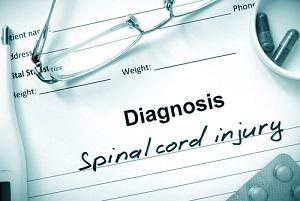
Understanding Spinal Injuries
According to the National Spinal Cord Injury Statistical Center, approximately 12, 500 people suffer from spinal injuries per year. Incomplete tetraplegia—an incomplete lesion that leaves some sensory or motor functions but little movement—accounts for approximately 45 percent of those injuries. Another 21 percent suffer from incomplete paraplegia, 20 percent suffer from complete paraplegia, 14 percent suffer complete tetraplegia, and less than 1 percent experience complete neurological recovery by the time they are discharged from the hospital.
To understand the differences, it is helpful to look at the spine in four sections: the cervical nerves (closest to the head), the thoracic area (located in the middle of the back), the lumbar area (lower back), and the sacral area (tailbone area). These specific areas, and the extent of damage to them, determine the level of paralysis or loss of functionality suffered.
Typically, the higher on the spinal cord the injury occurs, the more debilitation the patient experiences. For example, those who suffer from high-cervical damage may experience paralysis in their arms, hands, legs and trunk. Moreover, their ability to speak, breath, cough, or have bowel or bladder movements may be impaired or lost. In contrast, those who suffer from damage of the sacral nerves may experience some loss of function in their hips and/or legs, they may have limited control of their bowels and/or bladder but are able to manage it with special equipment, and they may even be able to walk.
Those who suffer from any type of spinal injury may often experience a battery of other health complications. This is due mostly to the loss in functionality. The more paralysis that occurs, the higher the risk and the greater the variety of complications that may be experienced; as an example, those who suffer thoracic or cervical spinal injuries are at an increased risk for pneumonia. Long-term and specialized care is often needed to prevent, monitor, and treat potential complications and conditions.
Data on Treatments Lacking
While there is a great deal of information on the types of injuries experienced, and their causes, there is little known about the treatment that is carried out afterwards. Take, for example, the case of pneumonia. Not all forms of treatment may be effective in all patients; some may have persistent or chronic issues and more aggressive treatment may be necessary to prolong life expectancy. This is the type of registry that the Australian advocates are pushing.
With such information, doctors would be able to gather mounds of data to determine which courses of treatment might be most beneficial for their patients. Moreover, they may be able to better understand how to prevent certain conditions in patients displaying particular symptoms or conditions. The overall outcome could be an improved quality of life and a longer life expectancy.
Suffered a Spinal Injury? You May be Due Compensation
When a spinal injury occurs because of an automobile accident or third party negligence, the victim may be due compensation. Unfortunately, pursuing those damages can often be difficult without the help of an experienced attorney. [[title]] can provide the aggressive representation needed to help you and your loved ones. Contact our Appleton personal injury attorneys or Green Bay personal injury attorneys and schedule a free initial consultation to find out how. Call 920-739-7366 today.
Sources:
http://www.abc.net.au/news/2016-03-20/spinal-injury-patients-call-for-national-register/7261270
https://www.nscisc.uab.edu/
https://www.nscisc.uab.edu/Public/Facts%202015.pdf
http://www.spinalinjury101.org/details/levels-of-injury


